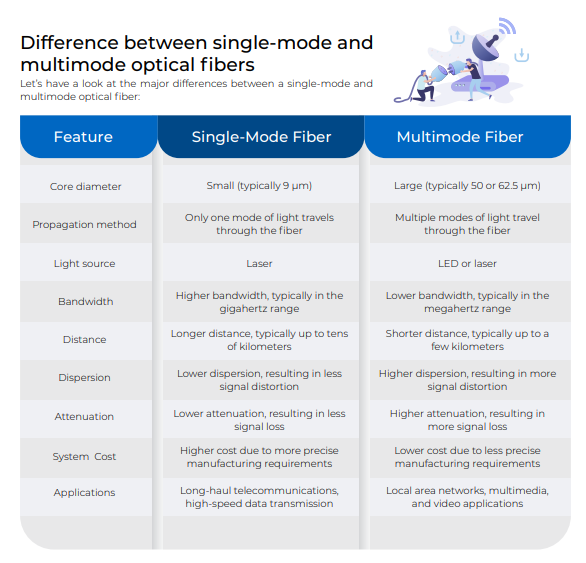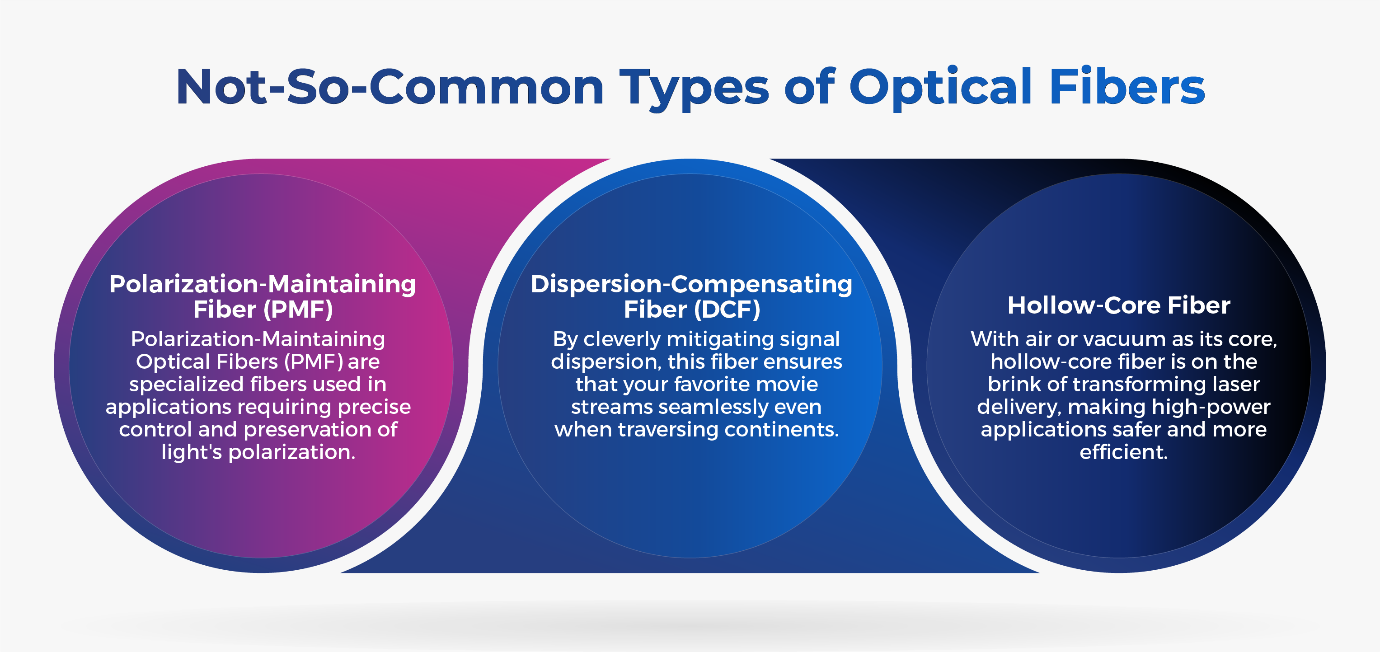All around us, underground and under the sea, there are these tiny threads that are used to transmit data using light signals. They are like a tiny pipe that carries pulses of light, allowing information to travel at incredibly high speeds over long distances. They help us watch videos, send messages, and do so many things we enjoy every day. So, the next time you order food, talk to someone far away, or do anything online, remember that these invisible thin strands – different types of optical fibers – are making it all possible
Not only that, but fiber optics technology is also transforming remote and rural areas by democratizing internet access. BharatNet, an innovative Indian endeavor, establishes a National Optical Fibre Network, extending 100 Mbit/s broadband to 250,000-gram panchayats, encompassing 625,000 villages.
This largest rural broadband project aligned with Make in India is fostering autonomy, holistic progress, and heightened connectivity, propelling rural India's innovation. Different types of optical fibers are playing a significant role in our digital evolution and will persist in doing so. Let’s find out more about them.
Types of Optical Fibers
There are different types of optical fibers based on how light travels within them, their refractive index, and the materials they're made from.
Based on the number of modes:
Single-mode Fiber: It is a type of optical fiber that allows only one mode of light to propagate through it. This means that it enables the transmission of a single light ray or mode along its core, minimizing the dispersion of signals and maintaining a high signal quality over longer distances.
Picture an undersea cable connecting continents, such as the Marea cable linking Spain and the United States. Its slender core allows light to travel in a single mode, enabling data transmission over vast distances with minimal loss.
Multi-mode Fiber: Multimode fiber is another type of optical fiber used for data transmission, but it functions differently from single-mode fiber. Unlike single-mode fiber, which allows only one mode of light to travel through it, multimode fiber enables multiple modes or paths for light to propagate.
For instance, imagine an office building with multiple floors and departments. To establish a reliable and high-speed network connection between different floors or sections, multimode fiber optic cables can be used. These cables might connect computers in different offices to a central network switch or connect different switches located on various floors.

Based on the material used:
Plastic Optical Fiber (POF): The core of plastic optical fiber is made from polymethylmethacrylate (PMMA) which has a high refractive index, allowing it to efficiently guide light signals. POF is one of the most common types of optical fibers in home networks.
Imagine you have a home entertainment system with various components such as a TV, a Blu-ray player, a gaming console, and a soundbar. You want to connect all these devices to create a high-quality audio and video experience. Instead of using traditional copper cables, you decide to use plastic optical fiber as it is not affected by electromagnetic interference, which can be a concern in settings with multiple electronic devices.
Glass Fibers: Glass optical fibers are the types of optical fibers that ensure durability and resistance to high temperatures ranging from -40°F to +900°F. These fibers are slender strands of glass bundled within the protective sheathing, such as stainless steel. They serve as conduits for light, efficiently transmitting it from sensor heads to designated targets.
Glass fiber cables find utility in both high-temperature scenarios, such as furnaces, ovens, and large engine condensers, and also in extremely cold environments like cold storage warehouses.
| Feature | Glass Optical Fiber (GOF) | Plastic Optical Fiber (POF) |
|---|---|---|
| Core Material | Glass | Polymethylmethacrylate (PMMA) |
| Temperature Range | -40°F to +900°F | Limited temperature tolerance |
| Installation Complexity | Requires trained technicians, expensive tools | Can be installed by untrained personnel |
| Signal Attenuation and Dispersion | Lower | Higher |
| Bandwidth | Higher | Limited |
| Flexibility | Less flexible | More flexible |
| Breakage Resistance | Fragile, prone to breakage if mishandled | Bendable, less prone to breakage |
| Installation Cost | Higher | Lower |
| Installation Safety | Requires trained handling | Safe for untrained users |
| Light Source Coupling | Higher technology requirements | Easier coupling with visible light sources |
| Application Distance | Longer distances | Limited to short distances |
| Use in Extreme Temperatures | Suitable for high and low temperatures | Limited temperature tolerance |
| Safety (Visible Light) | Uses invisible light | Uses harmless visible light |
Difference between a glass optical fiber and a plastic optical fiber
Types of Optical Fibers: Based on Refractive Index
Step-Index Fiber: In step-index fibers, the refractive index of the core is uniform throughout, creating a distinct step change between the core and the cladding. This abrupt change in refractive index causes light to undergo multiple internal reflections within the core, allowing for efficient light transmission. Step-index fibers are simpler in design but can suffer from modal dispersion, which limits their bandwidth and suitability for high-speed communication.

Graded-Index Fiber: Graded-index fibers have a core with a gradually changing refractive index from the center outward. This refractive index profile causes light rays to follow curved paths, allowing them to arrive at the end of the fiber more simultaneously. As a result, graded-index fibers experience reduced modal dispersion compared to step-index fibers, making them ideal for high-bandwidth communication.

Final Words:
Technological advancements, focusing on improving bandwidth and reducing signal attenuation, have opened numerous opportunities in the fiber optics market. Leading companies in the industry are working on engineering optical fibers that offer high bandwidth and low attenuation, driving broadband expansion through innovative fiber technology.
For instance, HFCL Ltd. recently launched a 288 F Microcable with a 200µm diameter. These 288F Micro cables by HFCL redefine industry standards by combining a high fiber count with a minimum diameter of 7.4mm, resulting in a reduced carbon footprint.
With features like optimized stiffness, extreme temperature resilience, and compliance with global standards, this microcable showcases the future of optical fiber technology. By eliminating the need for extensive groundwork, this ingenious design is poised to drive down network expansion costs and raw material consumption. As fiber optics continue to redefine possibilities, it is these strides that move us toward a connected, efficient, and environmentally conscious tomorrow.